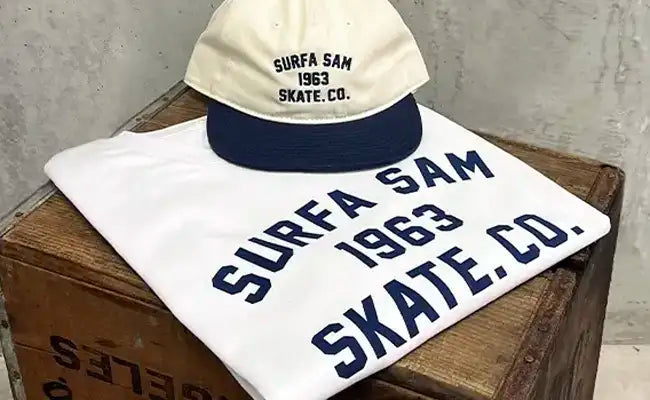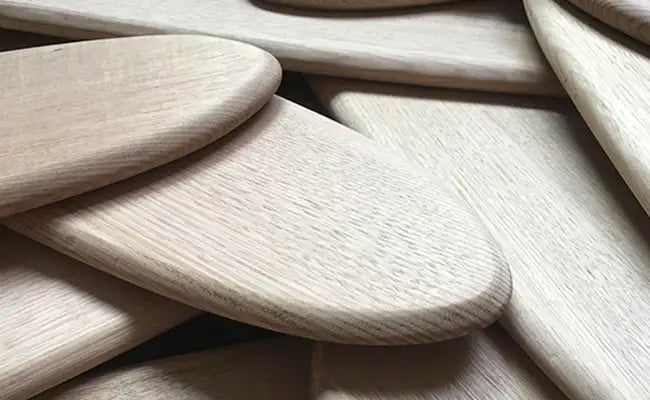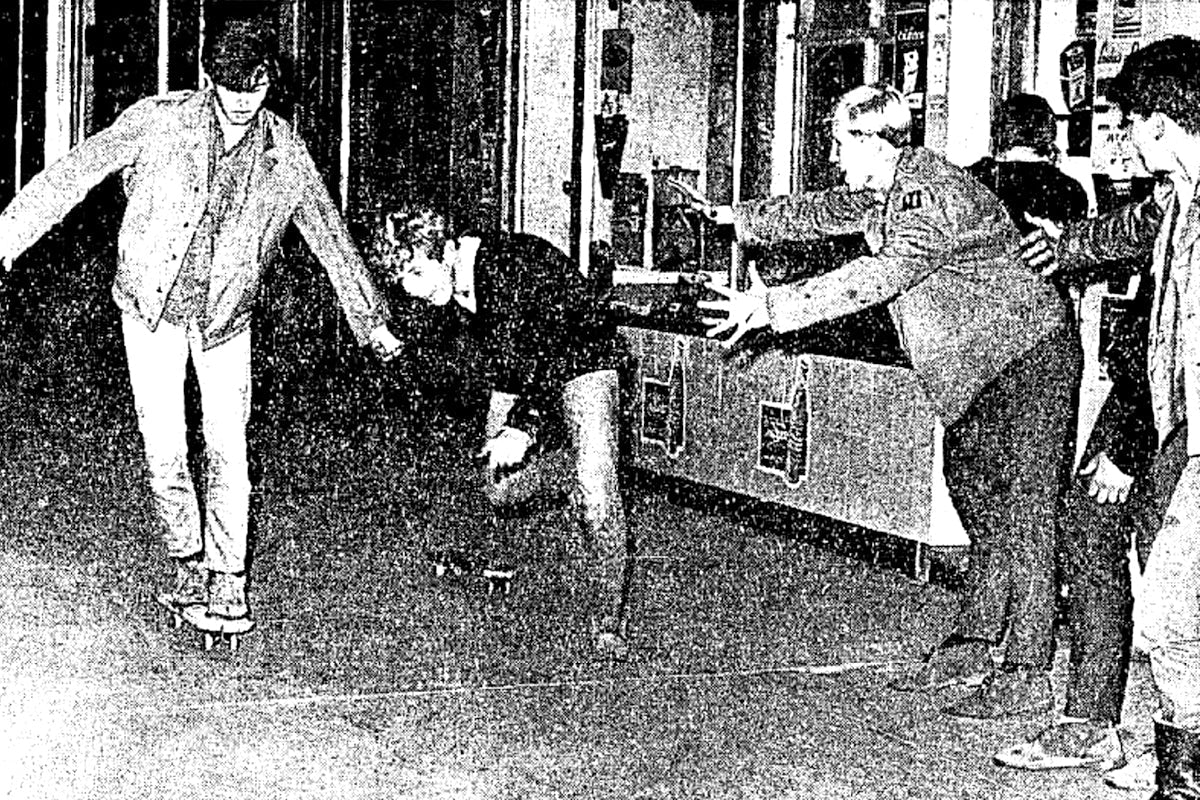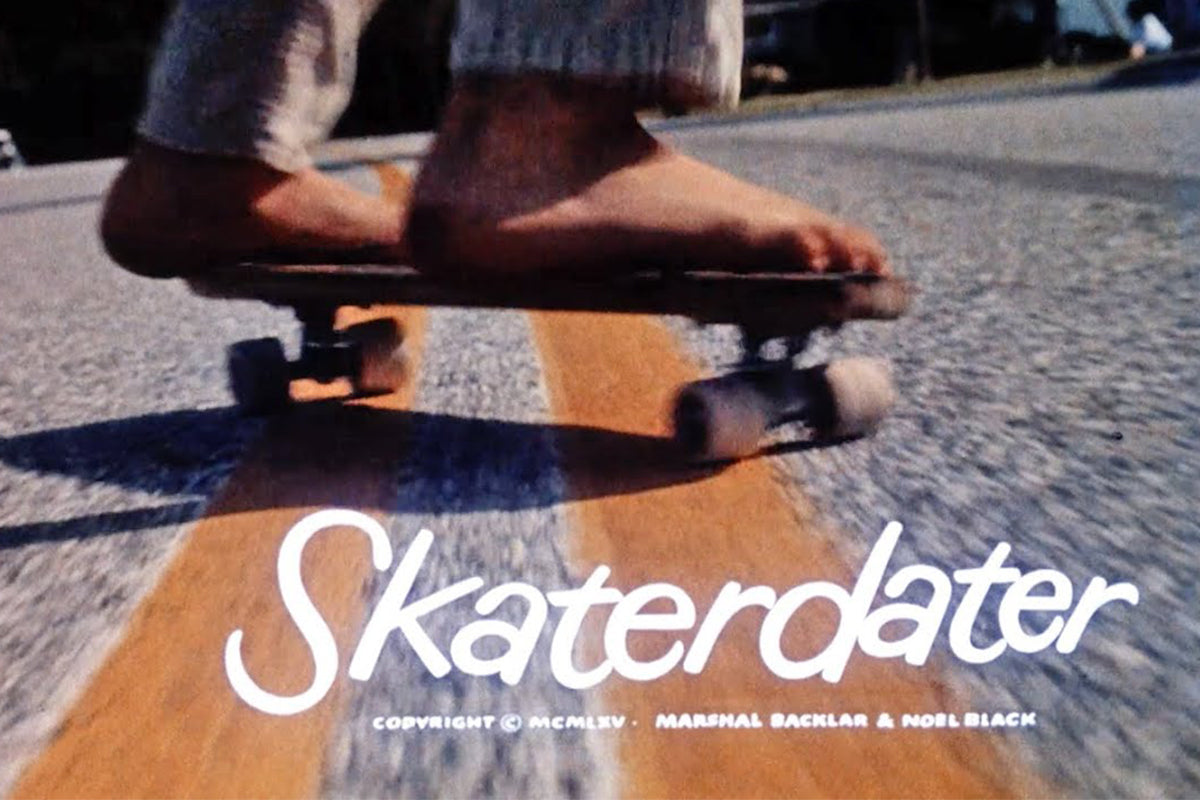Feature: The Return of Surfa Sam - TSPTR Journal
It’s generally agreed that ’sidewalk surfing’ found its origins in 1950's California - a strange spontaneous creation, probably originated by a number of disparate people all at around the same time, all of which were no doubt surfers. It was also during the post-war period, when the U.S. economy boomed, that it found wider popularity. In that time, the toy industry became aware of the potential of a ‘board with wheels’ and in 1959, Roller Derby released the first official skateboard. Due to the industrial development, the skateboard’s status changed from toy to sports equipment.
In 1962, the surf shop ‘Val-Surf’ in Hollywood sold the first self-produced skateboards. These boards featured a typical surfboard shape and roller skate trucks and were sold as complete boards. In 1963, the first skate contest in Hermosa Beach, California was a landmark event. Skateboarding was not just cruising anymore. Skateboarders showed their skills in different disciplines like slalom or freestyle and companies started to assemble a team to sponsor the riders. As the popularity of skateboarding began to expand, surfing guru John Severson published the first skateboarding magazine “The Quarterly Skateboarder” the same year.

8,204 miles away in Sydney, Australia something was beginning to happen there too. In 1963, Dr Leo Kalokerinos, a 29 year old medical student, transformed his parents’ small family home in the Sydney suburb of Rose Bay, into Australia’s first ‘Sidewalk Surfer’ company. Leo conjured up the idea after seeing a friend’s young son riding a crude home-made skateboard he had built using a plank of wood with a roller-skate nailed to the bottom. Seeing a business opportunity Leo set out to manufacture and sell this new ’toy’, filing for a patent on the 27 August 1963 for ‘A Ski-Board for traversing over land surfaces’. Marketed as the ‘Landsurfa’, it consisted of a rounded shaped nose and a squared off tail and measured in at 120 x 455mm in length and was equipped with the self titled ‘Landsurfa’ trucks and composite rubber wheels. To help bring his new product to life, Leo entrusted his new venture to a local organisation who provided employment for young adults with disabilities who had limited work opportunities.
It was this organisation that would shape and assemble the boards before transporting them to the family home where they were then stacked in the hallway waiting to be distributed to toy and sporting goods stores across Australia. This early and primitive design of the “Sidewalk Surfer” helped set the foundations for what was to come.
Australia’s relationship with surfing, and in turn skateboarding, up until this point had largely been shaped and reshaped by visitors - Duke Kahanamoku, during WWI and then the 1956 California Lifeguard team in 1956. The Aussie surf boom was an import: Gidget was as popular in Sydney as it was in San Clemente. Aussie surfers bleached their hair white blond like US champ Mike Doyle and weekend club hall parties shook to the sounds of regional hits like ‘Bondi Stomp’ and ’Stompin’ at Maroubra’. By the late 60s this US focus would all change and Australia would become a fully independent, pace setting surf nation, dominating for a decade.
After a short but successful run Leo’s boards’ shape and size evolved. His 1964 design imitated a miniature surfboard, affording riders more stability and allowing them to perform surf-like manoeuvres, helping the company gain a loyal following of young surfers and enthusiasts of the new sport. Looking to develop his newly re designed boards, Leo approached water skiing legend Fred Williams who was recognised as one of the world’s leading water ski manufacturers. Mr Williams would sell water ski off cuts to Leo who would then use them as the basis for his new design. Depending on what leftovers were available at the time the ‘Landsurfas’ would be shaped with whatever ply pattern was available, resulting in various stringer designs being released to the market. Due to its construction, these boards proved costly to produce and were only manufactured for a short period of time from late 1964 till early 1965.

It wasn’t until 1965 when the name Surfa Sam was introduced, and the much loved face of the company “Sam” was conceived. Created by advertising agency Cruikshank’s, it was creative director Victor Violet who coined the name “Surfa Sam”, whilst a colleague created the loveable surfing character. Sam’s debut was on a 24” square tailed board shaped out of durable Tasmanian oak, a timber that has become synonymous with Surfa Sam and skateboarding during the 1960’s, with many Californian counterparts importing this hardwearing oak for their own boards. Featuring an early variant of the now iconic Surfa Sam top graphic, it helped define the brand and set the foundation for its next incarnation that would remain in production until the end.


In an effort to keep up with rising demands and bring manufacturing in-house, the operation was moved out of the family home (to the delight of Leo’s mum) and into a factory located at 1A Ada Lane, Erskineville, Sydney where a small team of helpers were employed to manage the production. The rundown building had previously been used for storing wool bales, so with more space than was needed, it allowed the company to grow substantially with up to 1,000 boards being manufactured each week. The previously released 24” Surfa Sam board saw an update to its shape and size and was now available as a 30” slalom board that featured the new 54mm ‘Detroit Super Wheels’ named after the automotive capital, and to reflect the muscle car movement at the time. The new wheels were fastened to a more cost effective sheet metal truck design that were engineered by technical advisor Ron Slater and eventually replaced the original ‘Landsurfa’ truck that had been in use since 1963. It was during this period that Leo was forced to juggle his time between gruelling medical studies and his rapidly growing business. To keep things rolling Leo would visit the factory before, during, and after college with sometimes only having 15 minutes to spare before his next lecture. He was known for racing into the factory, making a quick phone call, addressing any production issues, before quickly rushing back for his next lecture. As the style and fashions of the era quickly became more vibrant so did the boards, with kids now having the choice between a red, blue, black, or natural timber deck. Originally the production process involved the boards being completely submerged in a vat of paint, but in the mid 1970’s this was changed, with the boards now having only the topside silk screened with either a solid red or blue before being graced with the iconic white Surfa Sam graphic. A new cast aluminium truck ’Kalok Deluxe Truck’ (named after Leo’s family name Kalok-erinos), was also introduced and offered skateboarders a better performing product to the cheaper alternative sheet metal design that had been designed some years earlier. Now a Doctor of medicine Leo continued to juggle his time between his medical practice and his first love Surfa Sam, but inevitably his new found professional career took precedence and a difficult decision was made. The Surfa Sam factory eventually closed its doors in 1985 after selling over 200,000 skateboards, bringing the sport and lifestyle of skateboarding to kids all across Australia.
After a long hiatus Surfa Sam is on its way back, with a new man at the helm, but still intent on keeping the original spirit alive and honouring Leo’s early vision. While Surfa Sam will no longer be manufactured out of Leo’s house, the original intentions remain the same: quality products that are classic in their design, referencing the refined style of the 1960’s. Surfa Sam’s unique and considered products are designed for a life lived on a skateboard or by the beach, ensuring another lifetime of memories from one generation to the next. Stay tuned.
Published in: TSPTR Journal Fall Winter 2020




